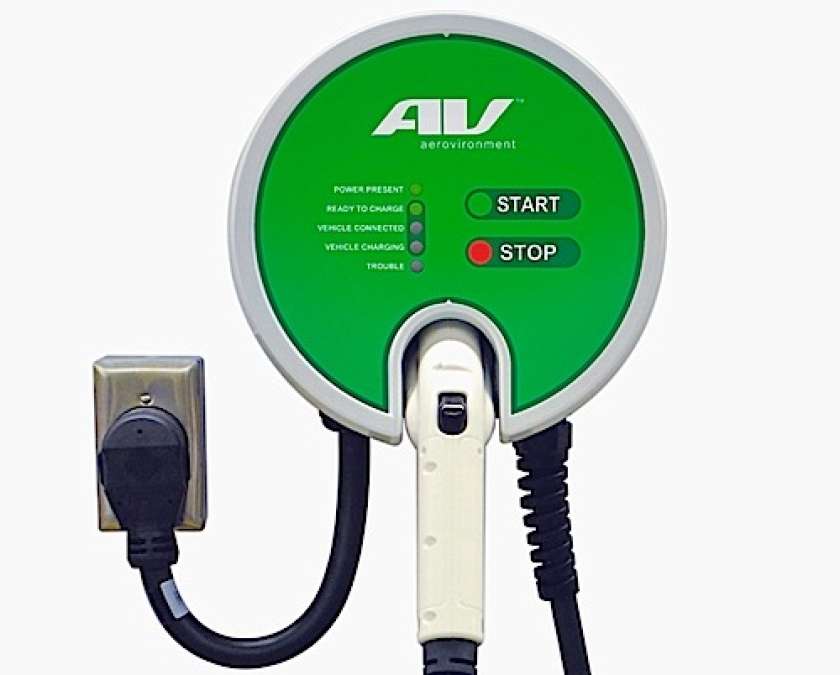NZ Hi Wahid, can you tell us AeroVironment’s role with electric vehicles so far?
WN AeroVironment has been involved in the electric vehicle industry for over two decades with the inception and co-developed of General Motors’ Impact, the precursor to the EV-1. Since then, we’ve been building consumer and commercial EV infrastructures with turnkey charging solutions for all EV charging needs.
NZ 2012 is a much different landscape than 2008 was, more mature and serious, how do you review the year thus far?
WN This year was an inflection point for electric vehicles, EV with nearly a dozen new EVs hitting the streets from practical sedans like the Mitsubishi i MiEV to luxury sports models like the Tesla Model S. Charging options are also diversifying and becoming more convenient. For example, AeroVironment introduced the EVSE-RS Plug-In, a moveable charging that plugs into any dedicated 240 V outlet. See: A Portable AeroVironment Home Charging Station.
This allows anyone to easily take their charger on their visits and travels. We inaugurated the first part of the West Coast Electric Highway thanks to our partnerships with Oregon and Washington government agencies by installing charging stations along Interstate 5 from the border of Canada to Southern Oregon making the West Coast Electric Highway closer to the Mexican border. We will continue to develop, expand and grow.
NZ Every new EV and PHEV offers better performance with better onboard chargers. What' do you feel about this and where the perfect middle ground?
WN The on-board chargers power is increasing beyond 3.3kW rating to 6.6kW, with 20kW, and beyond. The 3.3 kW were the answer to CARB’s ZEV credits and to keep costs down. The market should evolve with a range of chargers depending on the type of vehicle and what that market segment needs and is willing to pay for. As more vehicles come to market, manufacturers introduce larger capacity on-board chargers as a competitive advantage, such as the Honda Accord PHEV with 6.6kW, the Tesla Model S at 20kW, in Europe the Volvo C30 with 22kW, and the Renault Zoe with a 43kW onboard charger.
NZ People understand better EV and PHEVs but still struggle the charging technology. What do you think needs needs to happen?
WN Charging needs to be so seamless that consumers won’t think much about it, much like how charging a cell phone has become second nature. Still consumers need to understand the different types of chargers, Level 1, Level 2 and DC Fast Charging the same way that they understand unleaded versus premium gasoline. AeroVironment helps them understand this by offering a full range of charging solutions and turn-key installation, including permits and 24 hour customer support guarantee.
NZ When we think EV "being green" is a trait for early adopters, would the second wave be more financially conscious?
WN The next wave of EV buyers will have both environmental and otherwise concerns. Consumers are becoming more eco-conscious and environmental concerns continue to be a driver. Financial incentives are important, which will get better as we scale in production and develop better battery technology. Not only is charging more cost-effective than filling up with gasoline, but electric drivetrains require less maintenance than their counterparts. Also, EV drivers enjoy the convenience of charging at home rather than stopping at a gas station. Last, U.S. energy independence is becoming a topic of increased national interest with EVs becoming a means to achieve it.
NZ Charging stations are popping everywhere with interesting business models. Do you see a good solutions for both consumers, owners and providers?
WN There are so many ways and places to charge up for EV charging. We’ve opened up the West Coast Electric Highway with 27 charging stations along I-5 in Oregon and Washington all the way to the Canadian border, with more to come. The West Coast Electric Highway presents a compelling model for the future of public charging nationwide.
However, commercial charging can act as a human resources incentive for employees and a convenience to attract shoppers. Fleet owners can also save money and enhance their reputations by going electric.
The 2012 EV and PHEV landscape is more mature, offers more choice than was possible a few years ago. As charging providers and manufacturers, as AeroVironment continue to tweak products to better meet demand with greater flexibility, electric vehicles will increasingly become a part of our daily lives.





